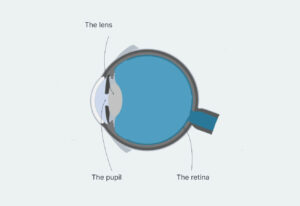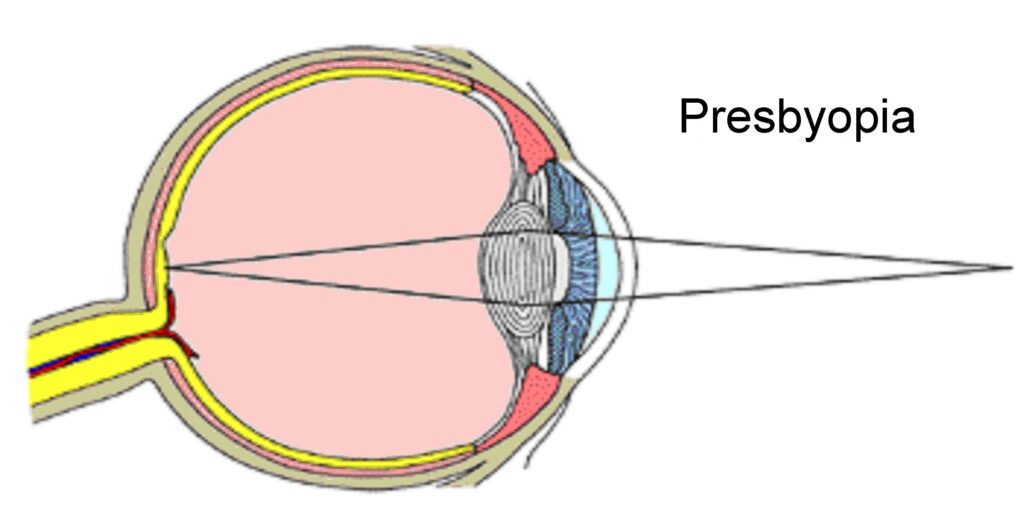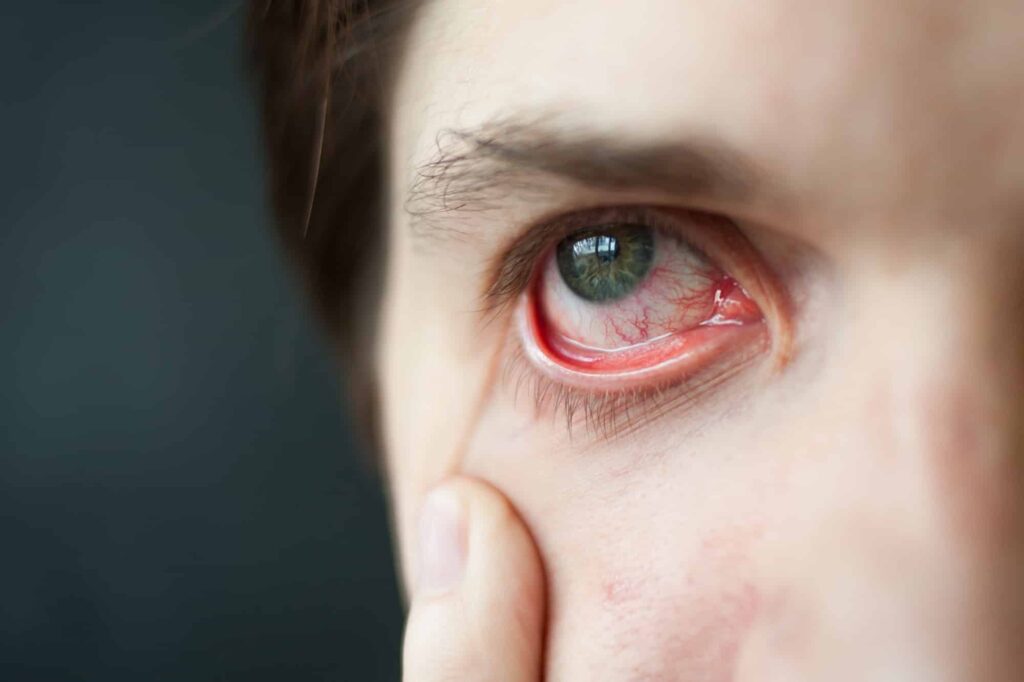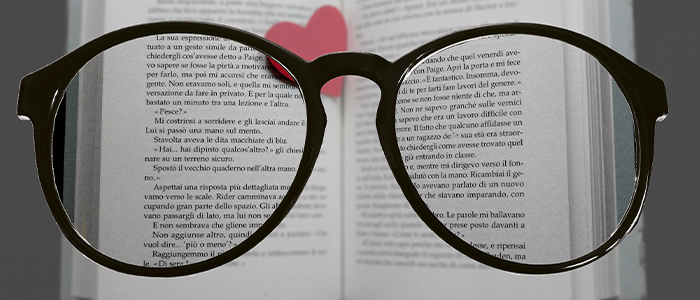Presbyopia is the medical term used to describe the condition where the eyesight starts to deteriorate with age. The eyeglasses or contact lenses are no longer able to provide clear vision at all distances, and people find they need reading glasses for close work. This happens because the natural lens inside the eye becomes less flexible over time, making it harder for the eye to focus. Presbyopia usually starts to affect people in their 40s. It’s a gradual process, and most people adapt by using bifocals or progressive lenses in their glasses. Read this blog post to know all about presbyopia.
Contents
What is Presbyopia?

Presbyopia is a condition of the eye that results in the loss of the eye’s ability to focus on close objects. It is a natural part of the aging process and typically occurs in people over the age of 40. Presbyopia can be corrected with glasses, contact lenses, or surgery.
The history of presbyopia is long and complicated. The word “presbyopia” comes from the Greek words “presbys” (πρέσβυς) meaning “elderly” and “opia” (ὄψις) meaning “eye”. The term was first used by the Greek physician Galen in the 2nd century AD to describe the condition of blurring of vision that occurs with age.
The exact cause of this condition is not fully understood. It is believed to be due to a combination of factors, including a decrease in the elasticity of the eye’s lens and a decrease in the muscle strength that controls the shape of the lens. These changes make it more difficult for the eye to focus on close objects.
It can be corrected with glasses, contact lenses, or surgery. Surgery for presbyopia is typically reserved for people who cannot or do not want to wear corrective lenses. There are several types of surgery that can be used to correct presbyopia, including laser surgery, refractive surgery, and intraocular lens implants.
Causes of Presbyopia

As we age, the lens of our eye becomes less flexible, which makes it harder for us to focus on close objects. This condition is called presbyopia, and it is a normal part of the aging process.
Several other factors can contribute to presbyopia, including:
Genetics
One of the main causes of presbyopia is genetics. If your parents or grandparents had presbyopia, you are more likely to develop the condition as well. Sometimes genetics also plays a role in how early presbyopia develops.
Health conditions
Several health conditions can lead to presbyopia, including diabetes (Find Online Diabetes Experts), hypertension, and cardiovascular disease. These conditions can damage the blood vessels in your eyes, which can make the lens less flexible and cause presbyopia.
Eye injuries
Eye injuries, such as a blow to the head, can also cause presbyopia. This is because the injury can damage the muscles or nerves that control the lens of your eye. These types of injuries usually result in presbyopia that develops later in life.
Trauma or surgery to the eye
Any type of trauma or surgery to the eye can also cause presbyopia. This is because the trauma can damage the lens of your eye or the muscles that control it. Surgery that removes the lens of your eye, such as cataract surgery, can also cause presbyopia.
Symptoms of Presbyopia

As we age, the natural lens inside our eyes becomes less flexible and it’s harder for us to focus on close objects. This condition is called presbyopia and it affects everyone to some degree beginning in their early to mid-40s.
Common symptoms of presbyopia include:
Eyestrain
One of the most common symptoms of presbyopia is eyestrain. This means your eyes are feeling tired or strained and you may have a headache after reading for long periods.
Difficulty reading small print
One of the most obvious signs of presbyopia is difficulty reading small print. When you try to read something that’s close up, you may notice that the words are blurry or fuzzy. You may have to hold the object further away from your face to see it.
Headaches
Presbyopia can also cause headaches, especially if you’re trying to read small print or do other close-up work for long periods. These headaches make your eyes feel strained and may cause pain in your temples or forehead.
Eye fatigue
Eye fatigue is another common symptom of presbyopia. This means your eyes are tired and you may have difficulty keeping them open. You may also experience blurred vision and trouble focusing on objects that are far away.
Holding reading material at arm’s length
Sometimes the only way to see is to hold the reading material at arm’s length. This can be frustrating, especially if you’re trying to read a book or a menu in a restaurant.
Diagnosis of Presbyopia
A comprehensive eye examination is the best way to diagnose presbyopia. Furthermore, Your eye care professional will ask about your symptoms and check your vision in each eye using a Snellen chart or other vision tests. If you wear contact lenses or glasses, he or she will also assess your vision with them on.
To rule out other causes of your symptoms, your eye care professional may also:
– Perform a refraction test. This measures how well your eyes focus light.
– Use a slit lamp. This instrument magnifies and lights up the front of your eye so that your eye care professional can examine it for signs of disease.
– Take measurements of the cornea, pupil size, and curvature of your lens using an autorefractor or aberrometer. These devices help to fine-tune the prescription for eyeglasses or contact lenses. An aberrometer can measure higher-order aberrations in your eye. These aberrations can cause symptoms such as glare, halos, and starbursts around bright lights.
Treatment Options for Presbyopia

There are several different ways to treat presbyopia, and the best option for you will depend on your individual needs. Some common treatment options include:
Glasses
One of the most common treatments for presbyopia is a pair of reading glasses. Reading glasses are available in most drug stores, and they can help you see clearly at a close range. If your vision is significantly affected, you might need to wear reading glasses all the time.
Contact Lenses
Another common treatment option for presbyopia is contact lenses. Several different types of contact lenses can be used to treat presbyopia, and your eye doctor can help you choose the right type for you. Some common types of contact lenses include:
Monovision contacts: These contacts correct one eye for distance vision and the other eye for near vision. This can take some time to get used to, but it is a very effective treatment for presbyopia.
Bifocal contacts: These contacts have two different prescriptions in one lens, and they can be used to correct both near and far vision. Bifocal contacts can take some time to get used to, but they are a very effective treatment for presbyopia.
Multifocal contacts: These contacts have multiple prescriptions in one lens, and they can be used to correct both near and far vision. Multifocal contacts can take some time to get used to, but they are a very effective treatment for presbyopia.
Surgery for Presbyopia
As we age, the natural lens inside our eyes becomes less flexible. This reduced flexibility makes it more difficult for the eye to focus on close objects. Presbyopia usually becomes noticeable in your early to mid-40s and continues to worsen over time.
While presbyopia can’t be cured, it can be corrected with surgery. There are several types of surgery that can correct presbyopia, including:
• Refractive lens exchange: In this procedure, the natural lens is removed and replaced with an artificial intraocular lens (IOL). The new IOL is usually set for near vision, so you may still need reading glasses after surgery.
• Conductive keratoplasty (CK): CK uses radio waves to shrink the collagen fibers around the periphery of the cornea. This creates a temporary “zone” of nearsightedness, which improves close-up vision.
• Laser-assisted in situ keratomileuses (LASIK): LASIK involves using a laser to create a flap in the cornea. The surgeon then removes some tissue from under the flap and repositions the flap.
• Photorefractive keratectomy (PRK): PRK is similar to LASIK, but no flap is created. Instead, the outer layer of the cornea is removed before reshaping the tissue underneath. PRK has a longer recovery time than LASIK, but it may be a better option if you have thin corneas.
Prevention of Presbyopia

As people age, the lens of the eye becomes less flexible, and cannot focus on close objects as easily. This condition is called presbyopia, and it is a natural part of the aging process.
Several things can be done to prevent or slow the progression of presbyopia. Some of these are:
Having Regular Exams
One of the best things you can do to prevent presbyopia is to have regular eye exams. These can help identify any vision problems early on, and allow for treatment to begin as soon as possible. Sometimes, presbyopia can be corrected with glasses, contact lenses, or surgery.
Wearing Protective Eyewear
If you work in an environment where your eyes are at risk of being injured, it is important to wear protective eyewear. This can help prevent any damage to the eyes that could lead to presbyopia.
Eating a Healthy Diet
Eating a healthy diet is important for overall health, and it can also help prevent some vision problems. Foods that are rich in antioxidants, like fruits and vegetables, can help protect the eyes from damage. Healthy fats, like those found in fish, can also help to keep the eyes healthy.
Getting Enough Sleep
Getting enough sleep is important for overall health, and it can also help to prevent vision problems. When you are well-rested, your eyes have a chance to recover from the day’s activities and heal any minor damage that has been done.
Conclusion
Presbyopia is a common condition that affects many people as they age. While it can be frustrating to deal with, there are fortunately several options available for managing it. With the right information and treatment plan, you can continue to enjoy a clear vision well into your golden years.
Cataract surgery is a safe and painless procedure. At EyeMantra we have a team of experienced eye surgeons, who will be happy to answer any questions on cataract surgery, cataract surgery cost, cataract lens cost for different cataract surgery types- Phacoemulsification, MICS & Femto Laser Cataract. Call us at +91-9711116605 or email at [email protected] for inquiries.


